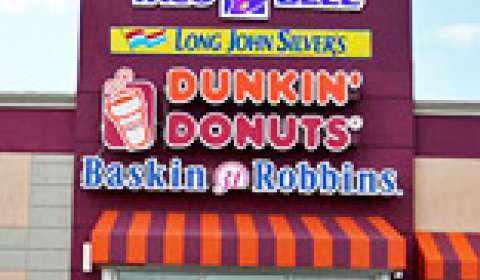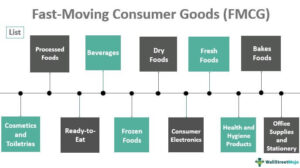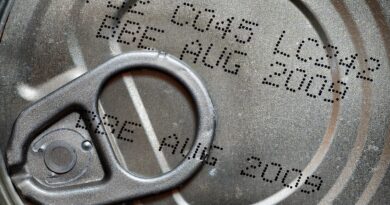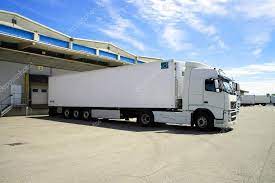Which Are The 10 Ways An FMCG Distributor Can Increase Sales And Profit?
How To Increase Sales With Fmcg Distributors?

First and foremost, wider distribution network. Here width and depth of distribution is the key. By this strategy, the marketer reaches closer to the targeted potential customers. The customers get a chance to try the product and then go in for repeat purchase if liked. For consumer consumables, sampling also is important to generate trial purchase. These activities must be backed by advertising periodically in a popular print media.
Fast Moving Consumer Goods, often known as Consumer-Packaged Goods (CPG), are those products that are used by the consumers daily and sold quickly. These products are sold at a comparatively lower cost. It includes non-durable household goods, dry goods, and other consumables.
Proven techniques to increase sales for an FMCG business
Sales of an FMCG business are similar to a see-saw, where both of the sides need to be balanced to maintain equilibrium. In this case, the volume and the price are the sides that need to be evened out to meet the desired sales target.
Whether you sell kitchen, electronic or any other type of household appliances, for example, the basics remain the same. Even the market positioning of the product does not interfere with the basics of the model.
Here are some steps which, if taken correctly, you could increase sales and improve cash flow within your venture. At the end of the day, cash is what matters.
1. Define dealer margins
If you are a new market entrant and want to promote a brand/product, you should define the margins of dealers, who would buy your product with cash or credit to distribute it further.
Keep in mind that they might want to offer a discount to their customers, so you need to consider this in your pricing strategy. To encourage a larger purchase by dealers, you might want to offer them a quantity discount.
Additionally, you could offer a 2% commission in the form of cash or products after a dealer reaches a certain threshold in terms of revenue.

2. Maintain your supply
Dealers would only be interested in partner with you if you have a well-established supply chain and inventory in place since they would risk their reputation if they cannot deliver a product to their clients.
3. Refer customers
Invite other B2B companies to refer companies to you in return for a commission. This way you will be able to boost your credibility as a reliable partner that can handle large volumes of transactions. This approach would also bring additional revenue for your company.
4. Share advertisement costs
Whatever the medium of advertisement is above-the-line (ATL) or below-the-line (BTL), the company should share expenses with their respective dealer as they are the ones promoting the brand.
A yearly allowance should be given to the dealers according to the percentage of their sales.
5. Provide after-sales service
The most important backbone of any business is the reliability, approachability, and convenience of after-sale services, warranty claims and possible refunds.
A company must be easily accessible and must reply immediately to any queries, especially the adverse ones. One happy customer would bring a few more happy customers, while one unsatisfied customer would spook lots of potential customers away.

6. Establish relationships within your industry
Nurturing long-term relationships with suppliers pays off big time.
If you have healthy partnerships with them, they will support you in the most difficult times as since a network of dealers in various regions allows you diversify risks and switch focus between regions in case one of them faces an economic downturn.
What Is The Sales Strategy For Fmcg Distributors?
It is the basic of sales, M.A.D.
- Marketing
- Advertising
- Distribution
Assuming that you have already done a feasibility study and clearly outlined your product’s competitive edge, you have to tell your potential buyers about the virtue of your product through Marketing and Advertisements. Apart from conventional print or audio visual media, social media forum is also a huge platform for such marketing these days.
As a manager, if you can generate awareness among your sales personnel that their peers are scrutinizing their performance, half of your job is done. A healthy competitive environment works positively for business.
At least once, make the distributor and retailer use your product themselves.
The price game always yields positive results. When your brand is yet to be established in the market, use a competitive pricing as your tool to success.
Focus on your products ingredients, features and benefits. Most of your competitors won’t bother to take that extra effort.
And lastly, be true to your products quality. Fake presentations never pays in the long run.
Distribution has to be one of the most important factor here, a strong supply chain management will ensure that your product is in within visual range of potential buyers across cities, town and villages.
Selling through distributors benefits manufacturers by adding scale, reach, and specialization to their sales efforts. Manufacturers can focus on innovation, engineering, and product quality while relying on their distributors to take those products to market. Often manufacturers will assist with sales and marketing efforts, including joint promotional activities, customized incentive programs, and shared sales leads for the distributor to act upon.
Along with these benefits come unique challenges. Distributors are independent companies that can sell many different products from different companies, which means continuous engagement and training are necessary to ensure that the products remain a top priority. Since no individual company manages the entire lead-to-revenue process, information gaps are pervasive, and missing out on revenue from delayed or absent follow-up on sales leads is a real possibility. The various systems and workflows in place between the manufacturer and their distributors further complicate the situation.
Fmcg products are both easy and difficult. Easy because there is already a market, and difficult because new product is difficult to push through. To market FMCG products, according to mentor of Shiva Rathi Group of Companies:

- Product should be of good quality as millions would be lost if you launch bad product.
- Product should be of low price as higher price product will immediately flop and tonnes of unsold inventory will force you to close your company.
- Start with low volume of product, and focus on building image and perception in mind of customers.
- Launch some product secretly in highway, that is tell some retailers deliberately sell your product as substitute. Example if someone is asking for Annapurna brand of Atta, then shopkeeper should say -take Larpage Atta, as it is better and JUST RUPEES 1 MORE.
- Flood with posters and banners and organize regular contests.
- If getting substantial revenue then focus on TV, Newspaper and Internet Ad.
- Tell distributors to give free gifts to retailers such as bucket, spoon, glass, and at times TV or Fridge.
- In later stage focus on volume, and slowly decrease the price.
How To Increase Sales in Fmcg Distribution?
MAXIMIZING YOUR DISTRIBUTOR NETWORK.
The lack of information and visibility is a real problem for manufacturers. Understanding distributor sales performance is difficult and insight into follow-up rates and response time on shared sales leads is virtually impossible to get. Creating and updating an integrated view of sales opportunities to understand actual-to-plan performance across distributors becomes a herculean task, requiring many spreadsheets and even more hours of work. The end result is still questionable, as it does not reflect a real-time view of what is going on and how opportunities are progressing. With no real understanding of the results of the lead generation spend and how it is impacting the sales pipeline, measuring return on investment in this marketing spend is virtually impossible.
To address these challenges and to get the most out of both existing and new distributor relationships, the following five steps must be taken:
1. SIMPLIFY THE FEEDBACK
Continuing to blindly provide sales leads to distributors, with no understanding or indication of their value to them, wastes money and frustrates everyone. Implement an easy and dependable way to let distributors provide feedback on the leads they are receiving—including quality and value. This can be done via an automated system that shares and tracks the lead, as well as capturing feedback for reporting and analysis by the manufacturer.
2. USE TECHNOLOGY TO YOUR ADVANTAGE
Technology is best used to enable a defined and optimized process, so start with the process, but make it a reality with technology. Enable fast and easy feedback from distributors from where and how they work. This means picking a solution that works with smartphones, tablets, and computers, ensuring that the end user experience is familiar and easy to understand. At LeadMethod, we leveraged familiarity with spreadsheets and email in our product design, making user usage frequent and adoption rapid.
3. PRIORITIZE YOUR LEADS
Not all leads are the same, and sometimes they are not leads at all. Having a defined and agreed to set of qualification criteria creates a shared understanding between manufacturer and distributor. To take it a step further, create a prioritized listing of leads for distributor action. This will ensure that rather than just a list of leads by date generated, the distributor will know which leads require immediate attention and which leads present the highest probability of conversion.
4. AUTOMATE LEAD MANAGEMENT
Rather than just collect leads and send them as a spreadsheet attached to an email, automate the distribution of leads to improve tracking and follow-up. For example, at LeadMethod, we use email to share new leads, as that is a known and familiar way to receive information, but we also link to a web page that contains all of the relevant information as well. That web page is part of the broader system, so all information updates and actions take place in one place as opposed to various spreadsheets, documents, or in boxes.
5. MAKE DATA DRIVEN DECISIONS
The benefit of unifying all of the collection, sharing, and tracking in one system is the ability to make decisions based on real data. The quality of leads is tracked over time-based on actual distributor feedback, making trends and historical performance is known. Lead-to-opportunity rates are also known and tracked to provide more informed reporting and to allow the best-performing programs to receive more investment when marketing budget decisions are made. This “closed loop” view is only possible because a single system is managing the lead-to-revenue process across all distributors.

Access To Excess
Getting the maximum performance from distributors requires a unified, system-based approach. By following the five steps above, you can increase communication and collaboration with distributors, which will increase revenue and amplify the benefits of a distributor-based sales model.
Salesforce Marketing Cloud is a one-stop platform solution for marketers looking to hyper-personalise their messaging, offer seamless omnichannel engagement, and support sales with high-quality leads. Marketers can build long-term customer relationships using this scalable and agile solution powered by Artificial Intelligence.
Digital marketing has proliferated so much that customers these days are affronted by promotional content at every turn. But sadly, a lot of it is generic and irrelevant to the customer, so they end up – not opening or replying to emails, closing the ads, or quitting the blog – without as much as a second glance. To make your brand noticed, you need to:
1) Encourage large purchases — If you want to increase your sales, encourage a larger purchase by your dealer. You can do this by offering them an extra commission or discount on larger orders. Take into consideration the fact that your dealer might want to offer discounts to their customers.
2) Maintain a good reputation — You must maintain a good reputation in the market. Dealers would only buy your product is they are confident enough to receive the supply on time. After all, no one wants to face unhappy clients.
3) Use technology and go online — Everyone is busy nowadays; make the daily buying process easy for your customers. Offer your customers online services, like online ordering and free home delivery. Easier the process, more the sales. Amidst this pandemic, when people are afraid to go out, it is the best way to boost up your sales.
4) Provide after-sales customer support — Reliability attracts most of the customers. People will buy from you again and again if they believe that they can rely on you. Giving a warranty on your products, good customer support, and after-sales service can be a great way to gain their trust. One happy customer would bring a few more customers whereas one unhappy one will make you lose many.

5) Establish a good relationship — Maintaining good relations with your dealers and suppliers can prove to be beneficial during the time of crisis. This not only helps you get enough support but also to keep a good reputation in the market.
6) Offer free samples — If you have enough capital resources to invest in your business, you can offer free samples of your product to build trust. Even though this advertisement is a bit costly, but it can boost your sales to another level and give you tremendous results.
7) It’s not the product — It’s not the product, it’s the benefits that people purchase. Improve the results that your product gives to the consumers and you will find your sales figures increasing automatically. Prepare a list of the benefits provided by your product and target the right audience.
8) Product Differentiation — FMCG sector offers the same kind of products from different brands. It is necessary to gain a competitive advantage and give your customer some sort of unique benefit compared to your competitor. It can be in the form of offers, discounts, or unique packaging.
9) Attractive packaging — Remember, the look and feel of your product’s packaging make the first impression on the consumer’s mind. Make sure it looks attractive and grabs the attention of your probable customers. If the look and feel of your product are not good enough, people won’t even take the opportunity to try them out.
10) Fix the right price –Research about the market price properly and then determine the price of your product. The value that your product offers should be worth the price. If your price is high, make sure you deliver high-quality products. Otherwise, you are going to lose a good number of customers. Do not keep your price too low, or else it will lose its value.
It is something like Loyal ‘Jack’ Lewman’s quote, “Never stop learning; For when we stop learning, we stop growing.”
In Fmcg How To Advertise,Manage and increase Sales?

Since they are fast moving commodities, one obvious way that businesses use are sales. 25% off for example.
However, that is more traditional, and when consulting we do not suggest sales all the time as it kills the margins for the company/shop.
One trick we do as marketers is develop an urgency for the customer. So even if they do not need it right away they are forced to buy it and store it. For example, if you buy 2 bottles of coca cola you get Rs 20/= off.
2. Urgency can be developed by phrases as till stocks last, putting some sort of deadline, use of word special.
The reason to do this is to develop an emotional spike in the mind of the consumer so as to help them make a decision right away.
You can follow 6 techniques mentioned below:

1. Define dealer margins
If you are a new market entrant and want to promote a brand/product, you should define the margins of dealers.
Keep in mind that they might want to offer a discount to their customers, so you need to consider this in your pricing strategy. To encourage a larger purchase by dealers, you might want to offer them a quantity discount.
2. Maintain your supply
Dealers would only be interested in partner with you if you have a well-established supply chain and inventory in place since they would risk their reputation if they cannot deliver a product to their clients.
3. Refer customers
Invite other B2B companies to refer companies to you in return for a commission. This way you will be able to boost your credibility as a reliable partner that can handle
large volumes of transactions. This approach would also bring additional revenue for your company.
4. Share advertisement costs
Whatever the medium of advertisement is above-the-line (ATL) or below-the-line (BTL), the company should share expenses with their respective dealer as they are the ones promoting the brand.
A yearly allowance should be given to the dealers according to the percentage of their sales.
5. Provide after-sales service
The most important backbone of any business is the reliability, approach ability, and convenience of after-sale services, warranty claims and possible refunds.
One happy customer would bring a few more happy customers, while one unsatisfied customer would spook lots of potential customers away.
6. Establish relationships within your industry
Nurturing long-term relationships with suppliers pays off big time.
If you have healthy partnerships with them, they will support you in the most difficult times as since a network of dealers in various regions allows you diversify risks and switch focus between regions in case one of them faces an economic downturn.
Whether you sell kitchen, electronic or any other type of household appliances, for example, the basics remain the same. Even the market positioning of the product does not interfere with the basics of the model.
As per the India Brand Equity Foundation (IBEF) report, FMCG is the fourth largest sector in the Indian Economy. It is categorized into three main segments namely — Food & Beverages (accounting 19 percent of the sector), Healthcare (accounting 31 percent of the sector), and Household & Personal Care (accounting the remaining 50 percent). The report also stated that this sector has projected a growth of 11–12 percent in 2019 and is expected to reach US$ 103.7 billion by the end of 2020.
What Is An Ideal Sales Strategy For Fmcg Distributor?
If you are a start up focusing in one or two cities then its better to have your own distribution set up then appointing a distributor. Map the city, how many retailers, wholesalers are there. Have your own sales team who can go to the market & take orders from retailers. First filter out what kind of retailers are fit for your product. Benchmark with Mrp/target consumer, where do you find a fit.
First, reach out with your product to these identified outlets. Plan BTL activation at these stores such as – shelf communication, cash counter communication, Posters etc to high light your product. Personally focus on each outlet, invest in driving offtakes in these outlets. Put promoters in top outlets on rotation basis. Make sure the product is visible in stores. Personal engagement with retailers will drive result, meet them ,take feedback on what else can be done to get offtakes. Later one once can appoint distributors also, to expand the reach.
Since having your own distribution can be costly affair for startups, specially from the logistics and manpower perspective so how do you see this going hand on hand.
The most effective answer relies heavily on the type of product, and the market it’s in. to try and summarize this in a post, let’s go back to the 4 P’s:
Product
A lot of the larger FMCG companies invest a lot of time and effort into understanding competitor products in the market place. What they (sometimes) neglect is a deep understanding of what makes their product different to others, and exploiting these nuances. How does the product make your consumers feel? What is the brand message? Does it perform a different role to others? Does it get consumed at different occasions? Understanding who your customer is, how they interact with your product, and why they purchase it is very important. This analysis then informs…
Price
One CRITICAL principle in pricing is that pricing is RELATIVE. The price you sell at needs to match your customers expectations of what they would pay for something of that quality. Price it too low and you devalue your brand. Price too highly and nobody will buy. FMCG companies tend to adopt one of 2 pricing strategies: HILO and EDLP. HILO is putting a product at a high shelf price, so you can promote it down to a lower, more attractive price when it matters, to drive impulse purchases. EDLP is having your product at the same price all the time (it stands for every day low price). Examples of products that work well on HILO include chocolate, biscuits, and wine. Examples of products that work well on EDLP include garbage bags, milk, and home basics
Promotion

If you think your product can drive incremental volume if it goes on promotion, then you also need to consider your promotion strategy. Deciding what time of year, how often, for how much, and what pricing mechanic to use are all very important to the success of your promotion. Your promotion strategy should also be aligned with your brand strategy (e.g. don’t use 60% discount on a luxury product!), as well as your customer use case (e.g. don’t offer a 2 for $x if your average customer only buys 1 a year!)
Place
As mentioned repeatedly, distribution is VERY important. Getting the sales force out to the most profitable, AND the largest channels of distribution is not only critical to growing your product sales, but also in increasing your brand presence, which will in turn drive demand. Ways to get your product stocked on shelves include:
- Offering freebies. Works particularly well in impulse channels, where independent stores like the idea of getting things for free (e.g. a branded fridge)
- Undercutting your competitors (in price, or in margin, or both). Works particularly well in price sensitive channels such as the discount channel. The key here is to play the portfolio game, so that margin loss on some products are counteracted by profit gain in others, that form part of the deal with your discounter
- Fulfilling a purpose. If you’re the only player in the market that fills a particular use case, then you can drive incremental value for your retailer, which is highly attractive
- Getting consumers to shout about you! The voice of the consumer is very powerful. Getting people to talk about you, and create a buzz around your product, will make buyers far more likely listen to your sell in story
Sampling & couponing are some of the most effective sales & marketing technique for FMCG products provided there is a relevant reach out.

FMCG promotion requires immense innovation coupled with targeted reach out. You can’t sell products as commodities any more. Consumers now seek a lot more information in the pre purchase stage. This where experiential marketing or sampling pays an integral role by reducing the percieved risk of customer significantly.
On the other hand, coupons provide a price incentive to consumers delighting giving them a higher perceived value. Discounts, price offs, sales have always generated enthusiasm among consumers.
However what really matters is that your campaigns should be extremely targeted and should leave behind a trail for re targeting the customers post- consumption so that you can turn innovators or early adopters to loyalist.
Sugar and Spice, an online grocery platform has designed for FMCG brands product sampling and couponing solutions to generate trials and influence sales through targeted, traceable, tech supported, retargeting enabled campaigns.

Maybe these sales strategies help you to sell FMCG product:
Technique #1. Time-limited Close
When to use: a perfect fit for situations when your prospect backs away with phrases like “I’d like to think it over”, “I’d like to sleep on it”.
How it works: when a prospect tries to put away the decision, you bring up a limited discount, a promotion, etc.
Example:
“I can understand that you want to consider everything carefully, but we have a 30% discount on this product which expires tomorrow. So, buying it today would be a great deal for you”.
Tip: the time-limited sale closing techniques are only valid if you do have an ongoing discount or promotion. Lying will not make your client more eager to close the deal. On the contrary, it will just make you look like a pushy salesperson (and, as a matter of fact, no one likes to be approached by such a guy).

Technique #2. The Assumptive Close
When to use: it is one of the best sales closing techniques if the prospect seems to be far from making up his mind. By using the right questions and phrases, you direct them towards the closed deal.
Example: you can use one of these lines:
- “Would you prefer a blue or yellow purse?”
- “Our standard shipping will get it to you by Monday. Is it okay, or would you like to order the rush delivery?”
- “Will 10 units be enough to start with?”
- “If you sign for a year in advance, you’ll get a 10% discount.”
Depending on your industry, you can come up with new phrases. For example, in the catering industry, you could go with something like “Will you be having ketchup or soy sauce with your meal?”

Technique #3. The Custom Close
When to use: works if you’ve known your prospect for a while, know their needs and wants, and have the product that can satisfy them.
Example:
“So, you want a wireless router with Gigabit Ethernet, detachable antennas, a traffic meter and a WPA Enterprise. Any additional features?”
You wait for the customer to answer, in 99%, all of them say “no”. After you hear the answer, you say in a casual way :
“Okay, then our [name of the product] is a good fit. It comes with a 1-year warranty for Rs 100. All I need is your signature, and I’ll have it delivered to you until the end of the day”.
Keep it casual when you hand the contract to the prospect. Every hesitation here might deprive you of the success.
Tip: the technique is better to be used if trust and mutual respect are already established. It’s a good fit for customers you’ve known for a while.
Technique #4. The Question Close
When to use: using questions is one of the most effective sales closing techniques to work with objections. If you see that a prospect is not quite sure about getting the product, try asking questions to find out the reason and try to change their mind.
Example:
- “Is the product I’m offering solving your problem?”
- “Can we proceed with the shipment?”
- “Is the delivery date okay with you?”
Asking questions is a win-win move for you as well as your client: it’s both a good way to close the sale and find out whether the customer is happy with the choice (it’s important to remember about the happy long-term relationship).
Technique #5. Bonus Close
When to use: this one works with new prospects who you’d like to become regular clients.
How it works: the main purpose here is to surprise a prospect with a pleasant bonus. You should make them think “Wow, that’s nice”.
Simple as that, the bonus close often provides surprisingly good results and get a good reputation for the company.
What’s the best sales strategy for my brand?
Brand behaviour is very different and depends on various aspects like price, store location, store type, consumer profile etc.
However, if you want me to be as generic as possible.
I would suggest to follow these steps,
1 – Go slow and control costs in the beginning. Work on getting outlet reach. Spend on sales team or network through which you are planning to sell. Spread you products in a large area, a city per se.

2- Now that you have done this, do store sampling on weekends and put banners/posters etc. (POS). You can also do a little digital marketing in the locality (targetting) to support this. See the product offtake and learn from the process.
3 – Now that you have learned from above process, expand to a larger territory. And now that you have a larger number of store do little ATL mixed with BTL to get sales. Use newspaper ads per locality, society activation, event sponsorship etc. To move the products.
There are many brands that have failed even after advertising. And there are many brands that are over 500 Cr. with advertising. This also goes to say is that Sales and Distribution is the key. Therefore, in my approach I am suggesting to increase the outlets first and then doing marketing activities.

2. Build optimum infrastructure of distributors, rural sub-stockists and CFA/branches/warehouses.
3. Plan and follow up for the numbers which can be challenging yet possible for the team.
4. Issues….solve them immediately or they end up becoming bottlenecks for your performance.
5. Non performers: Train, Guide, Track, Appreciate/Warn for good/bad work, Recognize/Remove good/bad performers. (In fmcg sales…its either perform or perish).
6. Take time out to evaluate and analyze.
People don’t buy products, they buy the results that product will give. Start your process of identifying your ideal customer by making a list of all of the benefits that your customer will enjoy by using your product or service.
2) Clearly Define Your Customer

Who is the person who would most likely to buy your product and buy it immediately? Create an avatar of that customer.
3) Identify The Problem Clearly
What kind of problem does your customer have that you can solve?
Width strategy , Depth strategy, Push strategy, pull strategy, low price strategy,etc..
Work with the stores to get good exposure and positioning. Buffet Frozen Foods in superstores shows that most Products are bought with a minimal decisions and investigation time. Basically you get what you see.
Get insight into what the customer like with the product that makes it unique. Then take that one unique aspect of the product and make it obvious that the customer should buy the product.

Strategy to increase sales in FMCG Business
Check out the following strategy to increase your sales in FMCG Business today.
FMCG industry is extremely competitive in nature. The FMCG industry is at the edge of change. This sector is seeing some rapid changes in customer tastes and preferences- be it food & beverage sector, personal durables or household care. The evolution of purchasing habits and the rise of cutting-edge technologies are changing the way we communicate with customers.
According to the report, the economic environment for FMCG Industry during H1 2018 was 40%. Increasing implementation of digitalization techniques along the procurement and distribution cycle, a growing e-commerce market, and changing lifestyles in developing markets drive the FMCG market.
Sales of an FMCG Business are similar to a see-saw, where both the side need to be balanced properly. Here the price and the volume are the main objects to meet the sales target.
Here is some strategy which, if taken correctly, you could increase sales and improve cash flow in your company. At the end of the day, cash is what matters.

1. Strategy to know what Customer Need
purchasing habits of a consumer are changing rapidly and to know the consumer behaviour towards your product need to know. Build your own strategy to know more about the customer need. Once you know about the customer need to build your own strategy which will help you to capture the market share and stand in the market as a leader.
2. Increase and manage sales bucket effectively
Sales are the first and foremost element of any company to grow. To manage your sales bucket you have to have a proper system to perform. Build a unique strategy in your business to have a proper lead, once you have a lead it is important to have a customized system to manage those lead.
Rebuild your sales strategy and helps to modernize your sales process to manage your leads effectively.

3. Bringing all Process Stakeholders on Digital tools/Platforms
There are no doubts that adopting digital tools means the world for every business looking for innovative ways to improve their business. Digital transformation directly increases effectiveness across every channel of distribution. The higher the quality of digital tools and platforms the FMCG companies use, the better the results.
Being digitally mature means proactive decision-making, improved customer experience, innovation in product offering, and a way to connect all process stakeholders across the various digital channels and devices.
![]()
4. Build a strategy for your Bottom-up savings
Increase your sales and increasing company revenue does not make the company profitable. To make more profit a company should have a proper process to control operational cost. Until you have a proper process in place it is very difficult for a company to save unwanted cost.

5. Manage your operation effectively
To have control over your operational cost a company should have proper tools to analyze and to manage all operational activity. Walkter Beacon Lab always open handhold to provide cutting edge tools which will reduce your operation time and also money. Our proven system helps our client to save 40% of their operational cost. Are you worried about your unnecessary cost into your operation, then the search ends here.
FMCG industry is seeing some rapid changes in customer tastes and preferences- therefore know the precise type of Custom Software you need to make your business truly exceptional. We provide a one-stop solution which is capable enough to be used by merchandisers as well as sales executives so that consolidated data can be seen in one single solution only.

Now here’s what we do:
- Managing Your Sales and operations effectively using your own custom software
- Help you better control on distributors
- Enable deep penetration across geography
- We manage availability and visibility
- Increase sales

- Minimize expiry/return
Are you also just blindly following the market leaders and not taking a more holistic and futuristic approach to achieve your target. Then the search ends here, stop dreaming and start implementing.
Top most festival Products FMCG consumers search today
World Wide Festive Trends Decoded What Indian festive consumers seek...
Read MoreHow right selection of FMCG Salesmen improves brand market share
How can FMCG Companies improve salesman’s technique in order to...
Read MoreHow most searched Fmcg sales and marketing words help newbie salesman
Why undestand FMCG sales management? Sales management is the process...
Read MoreHow Successful FMCG Salesman Starts his Day, a guide
How does one become a good sales executive in the...
Read More







It’s really a great and helpful piece of information. I am glad that you shared this useful info with us.
Thank you! for your kind words.
vendpavi b734bd4eb7 https://wakelet.com/wake/rdK8CfSUJHcuXbPQy41jl